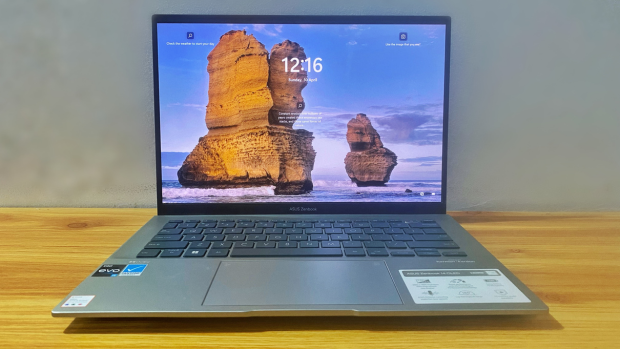The Asus Zenbook 14 is a lightweight and slim traditional clamshell laptop that features an OLED-type display with 90Hz screen refresh rate, the latest 12th generation Intel Core processors, US military-grade durability, and a 75Wh long-lasting battery.
Beyond the revamped design, the new Zenbook variant now has richer connectivity and a more premium audio experience for its users.

The chassis of the Asus Zenbook 14 is made of aluminum alloy material and the new lid design is formed with geometric lines and a simple brand monogram. The hinge design connecting the base and the lid allows the device to be laid flat on a surface at 180-degrees, a feature that Asus says is designed for content sharing.

All of the content is displayed on a 14-inch OLED screen with HDR capabilities, 2.8K resolution, a 16:10 aspect ratio, a 4-sided NanoEdge design that keeps bezels at 2.8mm, and a high screen-to-body ratio of 90%. This means that users, especially cinephiles, can achieve a more immersive viewing experience from the Zenbook 14’s screen.

Boosted by , a 1,000,000:1 contrast ratio and 90Hz refresh rate, the Asus Zenbook 14 is also a good fit for content creators who require deep black brightness when editing during production.
The additional 0.2 ms response times also means the device also performs well in light to moderate gaming scenarios.

In real-world setting, the Asus Zenbook 14 is built like a tank that looks like a purring sportscar. The full form factor gives off a professional and streamlined vibe but the interior shows that it is also a productivity powerhouse.
The display showcases its flexibility across varied scenarios, but users will appreciate it more through watching videos that highlight its color reproduction and cinema-grade 100% DCI-P3 color gamut.
The top-of-the-line 12th generation Intel Core i5 processor running the Asus Zenbook 14 is supported by a generous 16GB of onboard memory and a large 512GB PCIe 4.0 x4 NVMe M.2 SSD. Realistically, the laptop can run resource-intensive tasks with ease and little to no hiccups, but it does struggle with cooling, as we’ve observed elevated heating beneath the base.
Because of the Intel Evo support, the Zenbook 14 is also able to take advantage of longer battery life and instant wake. Unlike most minimalist and lightweight ultraportables, Asus is less stingy with the Zenbook 14. It has a port for Thunderbolt 4, a standard HDMI 2.0, USB 3.2 Gen 2 Type-A ports, combo audio jack, and a microSD card reader.

With the Thunderbolt 4 and HDMI 2.0 ports, users can connect to multiple monitors and switch between windows and designated displays via the brand’s proprietary ScreenXpert software.
Meanwhile, with the Asus-exclusive WiFi Master Premium tool, users can experience faster wireless transmission performance from the built-in dual-band WiFi 6E wireless network.
Whenever the laptop is opened, its ErgoLift hinge design automatically causes the ErgoSense keyboard to tilt, providing space for heat dissipation (which it desperately needs due to its elevated heating situation) and provides an angle that is more comfortable to most users when typing.

The keyboard is also backlit which is convenient for typing in dark environments, while the long key travel and dish-shaped indentation on each key improves typing accuracy and comfort that rivals a traditional desktop PC keyboard.
The power key located on the upper right section of the keyboard also doubles as a fingerprint reader to provide users an additional security login option.

Conclusion
The Asus Zenbook 14 OLED breaks away from the usual aesthetic of ultraportable laptops and provides users with a tougher build that packs formidable performance.
Except for its heating issue, the device manages to perform splendidly in all major areas – with its main highlight being its immersive and vivid display that succeeds in bringing colors to life.




